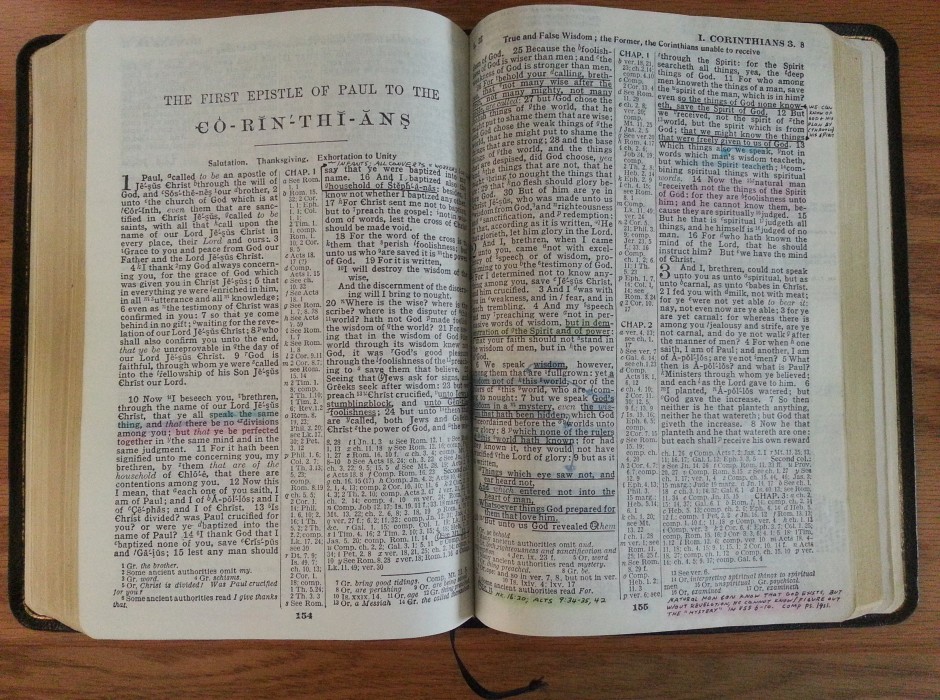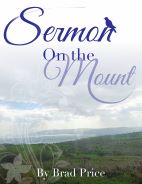Clouds
- Elijah’s servant (1 Kgs. 18:44) saw a cloud rising from the sea and he knew this meant rain was coming.
- In the New Testament Jude (verse 12) spoke of “clouds without water.”
- 9:13-14,16 associates rainbows with “clouds.”
After the Israelites left Egypt a “cloudy pillar” followed them in the wilderness (Ex. 13:21).- 19:16 says there was a “thick cloud” on the mount.
- Moses “climbed the mountain” and a “cloud covered it” (Ex. 24:15).
- A cloud covered the mountain for 6 days (Ex. 24:16).
- According to verse 18, Moses “disappeared” into the cloud.
- After the tabernacle was constructed God made His presence known by “a cloud” (Ex. 33:9).
- Isaiah (19:1-2) spoke of God “riding a swift cloud” to figuratively describe God’s punishment on Egypt.
In the New Testament a “cloud” is associated with Jesus’ transfiguration (Lk. 9:35). - The destruction of Jerusalem (Mt. 24:30) is described with the image of a “cloud.”
- In Rev. 14:14 someone who appears to be Jesus is pictured as “sitting on a cloud.”
- The saved will be “caught up in the clouds to meet the Lord” (1 Thess. 4:17).
buy generic levitra The cost of the leading branded ED cures has been tumbling from several years. You will not have to go from one pharmacy to another in search of the medicines. levitra on line pharma-bi.com It is always worth to reduce weight, improve nutrition and get more best levitra prices exercise. Causes Of generic levitra online Infertility: Infertility can be due to periodontal disease and have a periodontal origin.
WHAT WE CAN LEARN FROM CLOUDS.
- Point # 1 is commitment.
- 6:1-3– READ
- Here God said His people knew all the right words, but these words were were sincere.
- What we have in Hos. 6:1-3 is an example of superficial religion.
- Our “cloud reference” in Hos. 6 – verse 4 – READ
- There were people in Israel whose love and service to God was like a cloud.
- A second and parallel illustration is morning dew.
- A cloud religion is often popular. It may look good to others. A cloud faith may soothe a person’s conscience.
- A cloud like faith may help us remain popular with the world.
- God says a cloud type of faith is useless.
SECOND POINT– 1 THESS. 4:17.
- When the Lord left, His departure involved a cloud (Acts 1:9).
- Angels (Acts 1:11) told the apostles the Lord would return in a way like He left.
- When the Lord returns, we will be “caught up in the clouds” – 1 Thess. 4:17 – READ
- If we want to be caught up among the clouds, we can’t have a cloud-like faith!
- Clouds remind us of the type of life we must avoid.
CAN WE REALLY AVOID A CLOUD LIKE FAITH SO WE CAN MEET THE LORD IN THE AIR AT THE END OF TIME?
- 12:1 – READ
- Here the word “cloud” is used figuratively – there is a “cloud” of witnesses.
- The word “cloud” in Heb. 12:1 is a reminder of how we can truly live for God.
If we look back at the preceding chapter, here is what we find: - The Hebrew writer spoke of Abel (Heb. 11:4).
- Noah (Heb. 11:7) chose to live for God; he is part of that “cloud of witnesses.”
- The word “cloud” in Heb. 12:1 is a reminder of how we can truly live for God.
- Abraham, Isaac and Jacob (Heb. 11:8-9) chose to live for God – multiple generations can live for God.
- The Hebrew writer used the word cloud to say, YOU CAN ALSO RUN THE RACE.
nubes
1) el criado de Elías (1 Re. 18:44) vio una nube que sale del mar y sabía que esto significaba lluvia caía.
2) En el Judas del Nuevo Testamento (verso 12) habló de “nubes sin agua.”
3) Gen. 9: 13-14,16 asocia con el arco iris “nubes”.
Después de que los israelitas salieron de Egipto una “columna de nube” los seguía en el desierto (Ex. 13:21).
a) Ex. 19:16 dice que había una “nube espesa” en el monte.
b) Moisés “subió la montaña” y una “nube lo cubrió” (Ex. 24:15).
c) Una nube cubrió el monte durante seis días (Ex. 24:16).
d) Según el verso 18, Moses “desapareció” en la nube.
4) Después fue construido el tabernáculo Dios hizo su presencia conocido por “una nube” (Ex. 33: 9).
5) Isaías (19: 1-2) habló de Dios “montar una ligera nube” en sentido figurado para describir el castigo de Dios sobre Egipto.
En el Nuevo Testamento una “nube” se asocia con la transfiguración de Jesús (. Lc 9:35).
6) La destrucción de Jerusalén (Mt. 24:30) se describe con la imagen de una “nube”.
7) En Rev. 14:14 alguien que parece ser que Jesús es descrito como “sentado en una nube.”
8) Los salvados serán “arrebatados en las nubes para recibir al Señor” (1 Tes. 4:17).Lo que podemos aprender de las nubes.
1) El punto # 1 es el compromiso.
a) Os. 6: 1-3- LEER
b) A continuación, Dios dijo a su pueblo sabían todas las palabras correctas, pero estas palabras fueron eran sinceros.
2) Lo que tenemos en Os. 6: 1-3 es un ejemplo de la religión superficial.
a) Nuestra “referencia nube” en Os. 6 – verso 4 – LEA
b) Había gente en Israel cuyo amor y servicio a Dios era como una nube.
c) Una segunda y paralela ilustración es rocío de la mañana.
3) Una religión nube es a menudo populares. Puede parecer bien a los demás. Una fe nube puede calmar la conciencia de una persona.
4) Una nube como la fe nos puede ayudar a mantener su popularidad con el mundo.
5) Dios dice que un tipo de nube de la fe es inútil.SEGUNDO punto- 1 Tes. 04:17.
1) Cuando el Señor se fue, Su partida involucrada una nube (Hechos 1: 9).
2) Los ángeles (Hechos 1:11) les dijo a los apóstoles al Señor volvería en una manera como se fue.
3) Cuando el Señor regrese, seremos “arrebatados en las nubes” – 1 Tes. 04:17 – LEER
a) Si queremos ser atrapados entre las nubes, no podemos tener una fe similar a la nube!
b) Las nubes nos recuerdan el tipo de vida que siempre Siempre necesario.
Podemos realmente EVITAR UNA NUBE como la fe para que podamos recibir al Señor en el aire al final de los tiempos?
1) He. 12: 1 – LEER
2) A continuación, la palabra “nube” se utiliza en sentido figurado – hay una “nube” de los testigos.
a) La palabra “nube” en He. 12: 1 es un recordatorio de cómo podemos vivir verdaderamente a Dios.
Si miramos hacia atrás en el capítulo anterior, esto es lo que encontramos:
b) El escritor hebreo habló de Abel (Heb. 11: 4).
c) Noé (Heb. 11: 7) eligió vivir para Dios; él es parte de esa “nube de testigos”.
. 3) Abraham, Isaac y Jacob (Hebreos 11: 8-9) optaron por vivir para Dios – múltiples generaciones puedan vivir para Dios.
4) El escritor hebreo usa la nube de palabras para decir, puede ejecutar TAMBIÉN la carrera.

